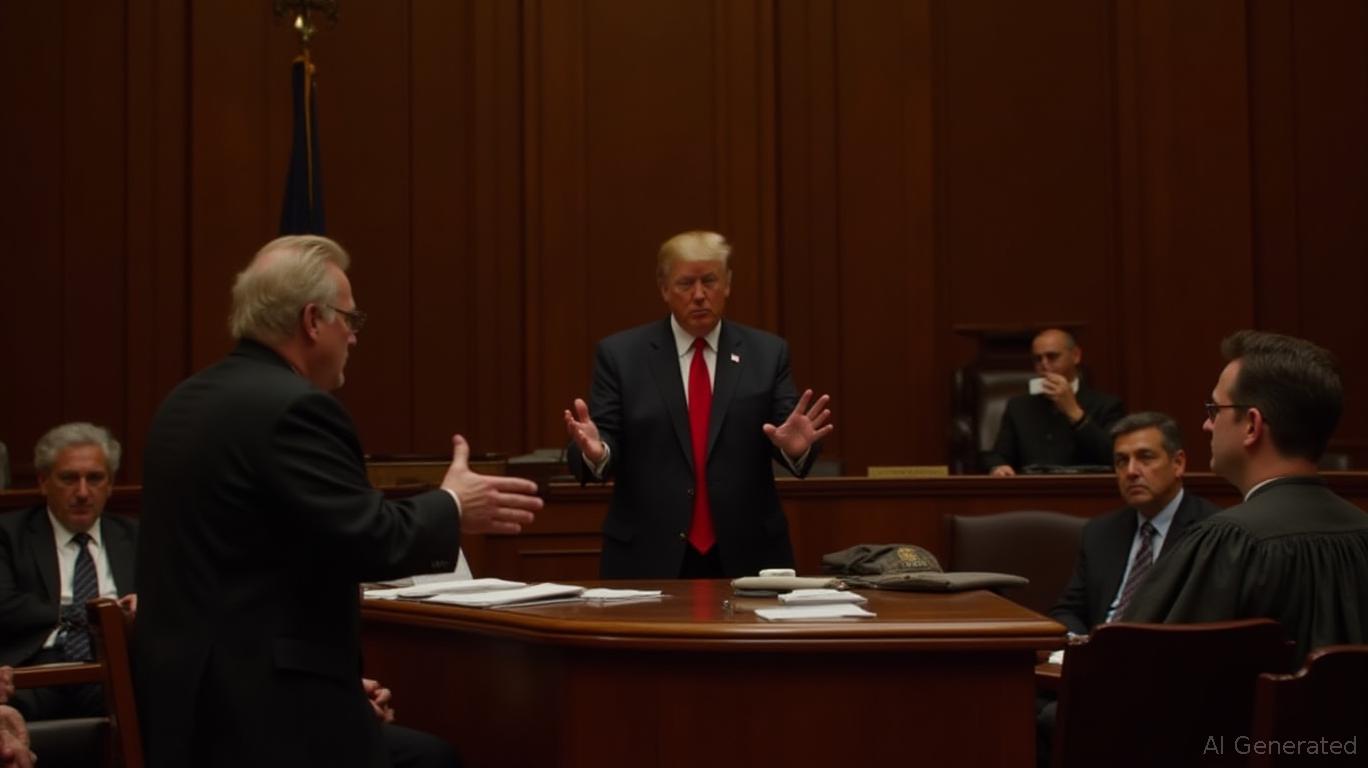Bitcoin Updates: Onchain Activity and Miner Expansion Face Off Against ETF Withdrawals and Federal Reserve Uncertainty
- Bitcoin's onchain inflows pushed realized cap above $1.1T, but ETF outflows and Fed uncertainty hinder recovery. - October saw $19B crypto crash, with ETFs like Fidelity's FBTC recording $164M outflows amid rate cut fears. - Miners expand operations with $314M ASIC purchases, signaling long-term bullishness despite short-term volatility. - Analysts remain cautiously optimistic about Bitcoin's future if ETF demand resumes and macroeconomic stability returns.
Bitcoin’s on-chain inflows have lifted its realized cap to over $1.1 trillion, an $8 billion increase largely fueled by treasury institutions and ETFs. However, the asset’s rebound is still limited by declining ETF interest and ongoing economic uncertainty. The crypto market’s $19 billion plunge in October has left investor sentiment in the “Fear” zone, with market watchers monitoring whether a resurgence in institutional buying and potential changes in Federal Reserve policy could spark renewed optimism, according to a

U.S.
These outflows contrast with the steady inflows seen in previous months, underscoring the fragile confidence investors have in crypto’s volatility, as highlighted by BeInCrypto. Despite the recent downturn, Bitcoin ETFs still manage $149.98 billion in net assets, representing 6.75% of Bitcoin’s market cap, while Ethereum ETFs oversee $26.60 billion, or 5.58% of ETH’s value, according to Coinpedia.
Following the Fed’s uncertain stance, Bitcoin’s price slipped 3.71% to $108,325.44, and Ethereum dropped 2.68% to $3,904.19, Coinpedia reported. Nevertheless, the announcement of a U.S.-China trade agreement in late October temporarily improved market sentiment. The deal, which delays tariffs on Chinese imports until 2026 and addresses rare earth mineral regulations, pushed the Crypto Fear & Greed Index up to 37 from 33, as stated in a
Bitcoin’s value climbed back above $111,300 after Trump announced reduced tariffs on China, but the rally quickly lost steam, according to a
Bitcoin mining operations are expanding, with hash rates increasing as companies like American Bitcoin — associated with the Trump family — acquire 17,280 ASIC machines for $314 million, according to the TradingView report. Ki Young Ju from CryptoQuant called this a “clear long-term bullish signal,” emphasizing that increased miner activity enhances network security and adoption, as discussed in a
Despite these positive trends, Bitcoin’s price recovery still depends on a resurgence of ETF inflows. Ki Young Ju pointed out that current demand is mainly from ETFs and MicroStrategy, both of which have slowed their buying, as the TradingView report mentioned. Bitfinex analysts forecast that Bitcoin could reach $140,000 by November if ETF inflows return to $10–15 billion and the Fed implements two rate cuts in Q4, according to the TradingView article.
On-chain data and miner growth indicate underlying resilience for Bitcoin, but shifts in ownership — such as long-term holders selling to institutional investors — reflect a maturing market, as described in a
Disclaimer: The content of this article solely reflects the author's opinion and does not represent the platform in any capacity. This article is not intended to serve as a reference for making investment decisions.
You may also like
Bitcoin Updates: Federal Reserve's Careful Approach and ETF Withdrawals Lead to $1.13 Billion in Crypto Sell-Offs
- Cryptocurrency markets crashed on Nov 3, 2025, with $1.13B in liquidations as Bitcoin fell below $107,500 and altcoins dropped over 6% amid Fed policy uncertainty. - Federal Reserve Chair Powell's cautious stance on rate cuts and ETF outflows—including $1.15B from BlackRock—exacerbated sell-offs, boosting dollar strength and risk aversion. - October's "black swan" event—$19.37B in 24-hour liquidations—set the stage for November's turmoil, with Solana and Dogecoin losing 60–80% of value during prior volat

Supreme Court Decision on Tariffs May Reshape Limits of Presidential Authority
- U.S. Supreme Court will rule on Trump's IEEPA-based tariffs, testing presidential power limits under constitutional law. - Lower courts invalidated tariffs, arguing Congress retains tariff authority under Article I despite IEEPA's emergency powers. - "Major questions doctrine" could limit executive overreach, but conservative justices may split on emergency powers interpretation. - Trump threatens retaliation by reimposing tariffs via alternative statutes if IEEPA case fails, complicating but not halting

Stellar (XLM) Falls 8.2% as Smart Contracts Expand and November Patterns Emerge
- Stellar (XLM) fell 8.2% in 24 hours amid November trends but shows strong fundamentals with 700% smart contract growth and $5.4B RWA volume. - Protocol 23 upgrade boosted scalability to 5,000 TPS, while partnerships with remittance providers and banks drive institutional adoption and low-cost transactions. - Historical backtests reveal XLM typically rebounds 5.3% within 5 days post-crash, though gains fade after 10 trading days due to market volatility. - Analysts highlight Stellar's real-world utility,
Trader With 100% Win Rate Loses $38 Million in Market Meltdown